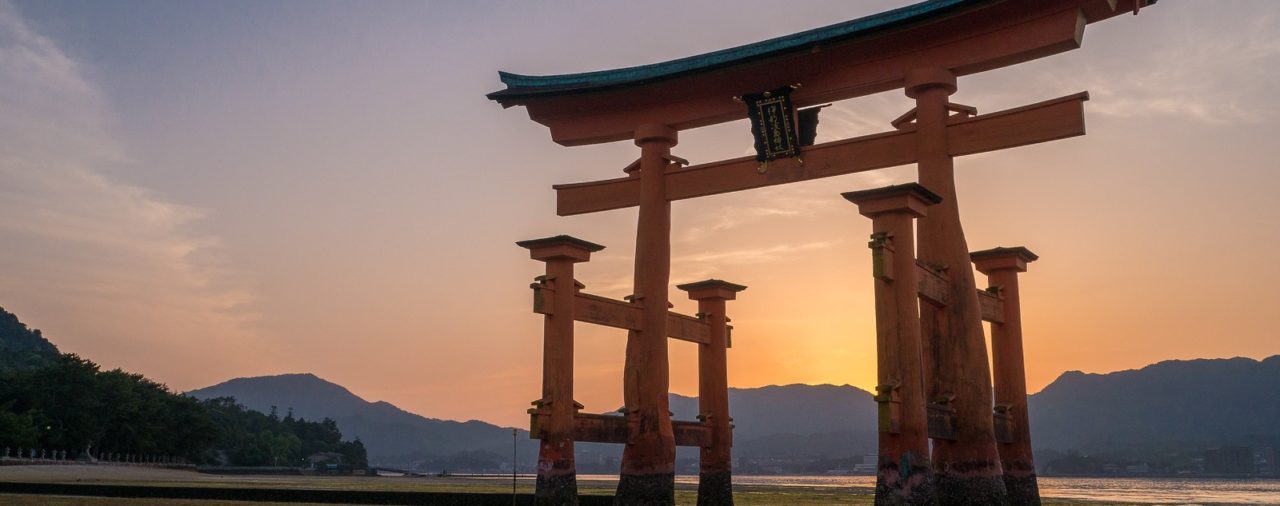Shibuya, Tokyo
Shibuya represented the Japan I had anticipated — bright lights, vibrant colors, pulsing energy, and so. many. people. My friend who is living in Japan met me in Tokyo and showed me around our first day, navigating me through the metro’s maze and the surging mass of people.


Zojo-ji Temple & Tokyo Tower
After the heady rush of adrenaline in Shibuya, our next stop juxtaposed that modernity with a slice of quiet and reflection. At Zōjō-ji Temple, the Jizō statues humbled me. These statues live in “the Garden of Unborn Children.” The petite statues are the first thing you see when entering the temple, and tiny gifts, clothes, and rock piles adorn most statues. These gifts shorten the unborn child’s trip to the afterlife. The statues rest under giant trees, and the pinwheels near each statue whir in the breeze. Beautiful and a little haunting, this temple was a fascinating first glimpse at Japanese beliefs and customs related to death and the afterlife.
Towering over this quiet garden and temple is the bright orange column of Tokyo Tower. With observation decks at 150 and 250 meters, views from the top include 360 degree sweeping views over the cityscape. I loved peeking into the neighborhoods. Like a bird soaring overhead, I peered down at the shapes and colors of streets and buildings.



Meiji Shrine, Tokyo
Much of Japanese culture is centered around specific customs and rituals. When visiting the shrines and temples, tradition and culture are baked into every aspect. After entering the wooden torii gate at Meiji Shrine, we stopped to admire the large wall of saké barrels. These are decorative barrels, never filled with saké in actuality, but instead are representative of a larger donation. According to custom, Meiji Shrine accepts donations from saké producers across the country on behalf of the many smaller shrines. A decorative empty saké barrel accompanies each gift and is then displayed at the shrine’s entrance; shrines throughout Japan use this gifted saké for celebrations and holidays. Each barrel is gorgeous and unique.
Once we admired the artful barrels, it was to onward to the temple, with a quick stop at the ablution pavilion, where water basins and ladles allow visitors to perform temizu, before entering, which is a symbolic cleansing signifying the removal of evil and pollution.


Hase-dera Temple, Kamakura
The train system in Japan is phenomenal, and I took a day trip to Kamakura, a beachside town near Tokyo. At Hase-dera Temple, I found an enchanting moss garden that is surely where the fairies and elves live. The entire temple complex wound through the woods. Families worshipped and tourists wandered. I found a strange little inlet where few people peaked. Towering trees shaded the gentle mist cooling the entire garden, which kept the delicate floor of moss vibrant and healthy.
Elsewhere in the temple, I found more Jizō statues. I had first encountered Jizō statues at the Garden of Unborn Children in Tokyo, and was intrigued to see this other representation. Jizō is a beloved and popular Japanese Bodhisattva known to alleviate the suffering of the living and the dead. And a fun fact, Jizō is also the patron saint of travelers — I mimicked the locals and gave him a gentle splash of water for my journey.
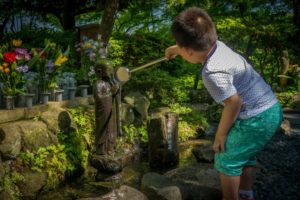
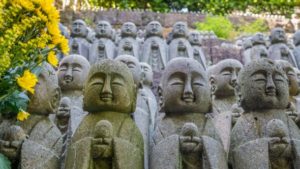
Buddha, Kamakura
The most famous part of Kamakura is the gorgeous bronze Buddha statue at Kōtoku-in, which dates to around 1252. It’s a beautiful statue, and I love the way bronze streaked and aged over the centuries, visually marking the passage of time. The statue is 40+ feet tall and used to be entirely gilded, but now there are just faint traces of that gold on his face. The sign outside the temple noted that it is The Temple of Buddha and the gate of the eternal, marking it as an important spot in Japanese Buddhism. I didn’t make it to the interior viewing because the line was insane (I visited during Golden Week), but apparently you can view up into the statue and see the graffiti left there throughout the years.
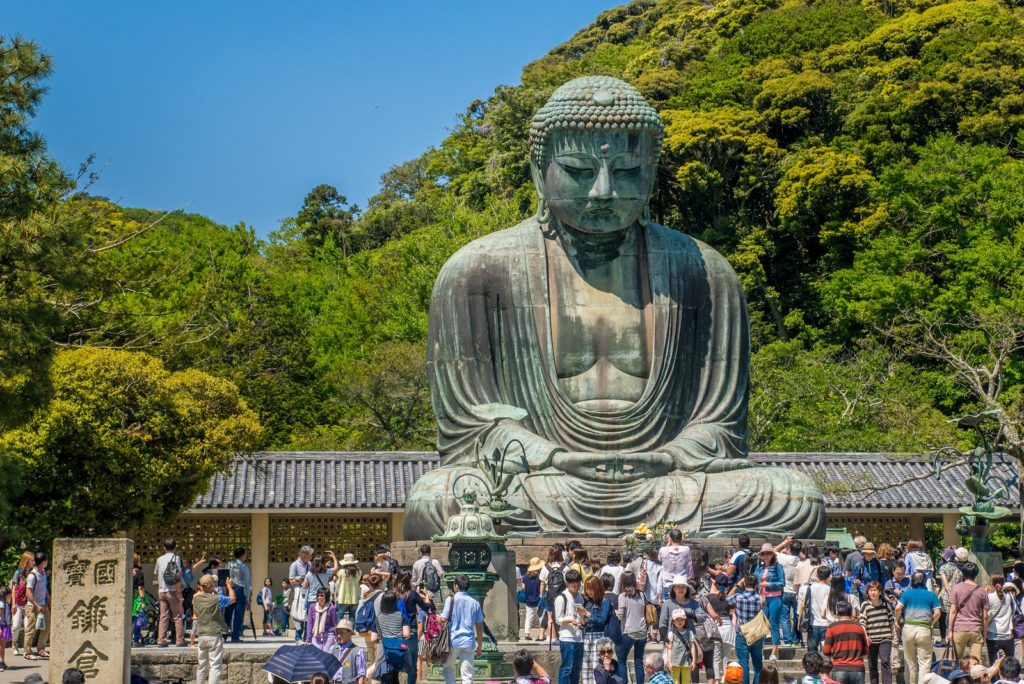
Temple and Beaches of Kamakura
Deep shadows hung over the city by the time I made it to my final stop in Kamakura, the Tsurugaoka Hachiman-gū Temple. This is a beautiful temple complex, perhaps one of the most peaceful that I found in and around Tokyo. I watched the sun begin to set on the reflection pond while sitting underneath a blossoming arbor of gorgeous wisteria. Earlier in the day I had wandered to the nearby beach, but there was an algae bloom tinting the water orange, so I didn’t stick around long.
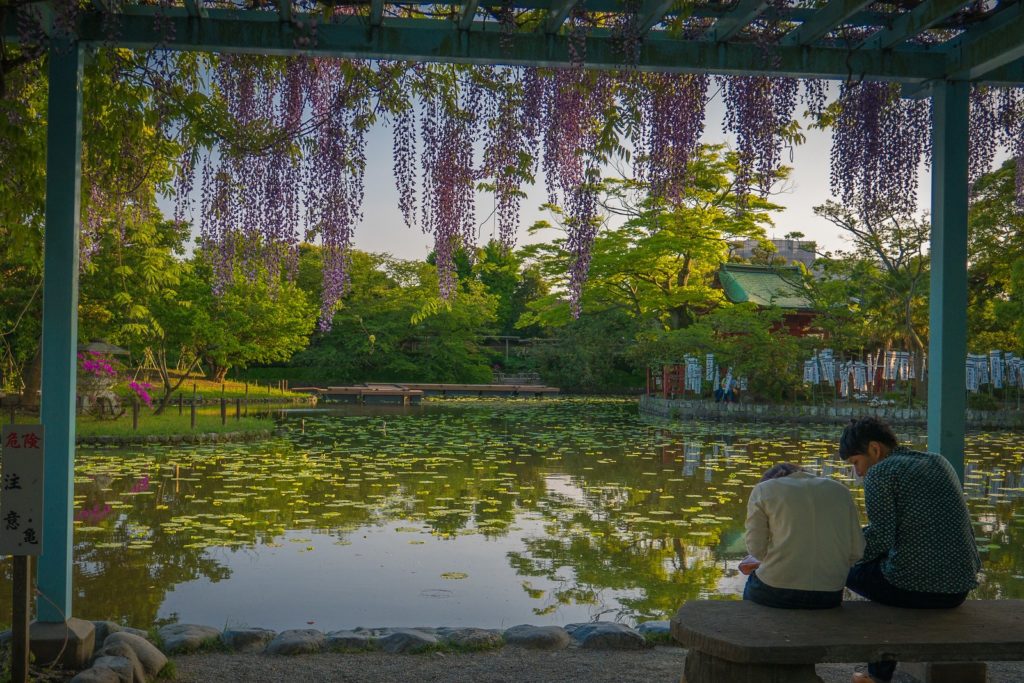
Kiyomizu-Dera, Kyoto
Japan’s history fills every corner of the islands, and I could have spent months just traveling to the cities and towns near Tokyo. I visited Kawagoe one day, and it is a charming city known for handmade sweets. After a few days in Tokyo, however, it was time to head to Kyoto, a city drenched in history at every turn. During my weeks in Japan, I played the consummate tourist and spent my days far from my computer, instead wandering in and out of elaborate gardens and towering temples.
Kiyomizu-dera is among the most celebrated temples in the country. Founded in 780, the name means “Pure Water” and was so named because the Otowa Waterfall trickles down a ledge and into the temple complex.
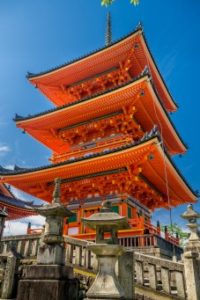
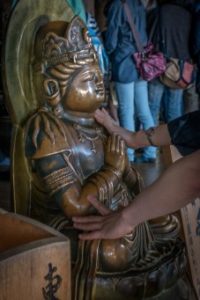
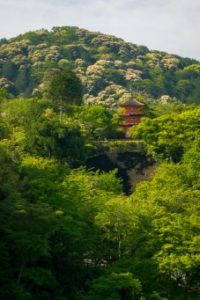
Around Kyoto, Japan
The Kyoto of my imagination was one that I had romanticized by reading Memoirs of a Geisha as a young’un. I pictured small lanes winding through low-slung buildings. I could hear the squeaking of carriages and the click of geisha heels. The reality is a far cry different. Kyoto is huge. It’s a modern city glinting with steel and glass. And yet, it’s still quaint and historic too. I found atmospheric lanes and aging wooden houses. While I didn’t spot a geisha, truthfully, I didn’t look too hard. Instead, I looked for the hidden gardens hiding towering bamboo. I watched a beautiful interpretive dance performance at small temple. I found historic aqueducts leading to tiny caves. A roadside cart converted into a cat hotel. I found the traditional, the ancient, and the quirky.
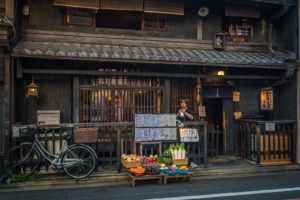
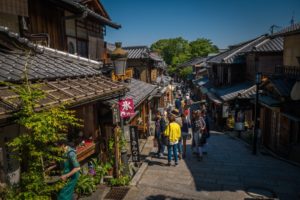
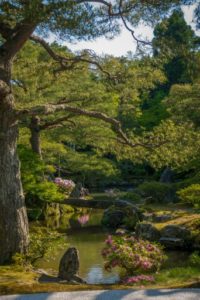
Golden Temple, Kyoto
Kyoto’s Golden Temple, Kinkaku-ji, reflects beautifully in its garden pond. Throughout my time in Japan I found myself in awe of the precision of each garden and the fastidious care with which each temple scene is created. It’s all so reflective of the orderly and careful Japanese culture that I discovered over my two weeks in the country. This temple, which is formally named Rokuon-ji, was was oddly reminiscent of Myanmar for me. Very few of Japan’s temples and statues are gilded, so viewing this showy temple reminded me of all the vast amounts of gold leaf used throughout Myanmar on every surface of their religious statues and buildings.
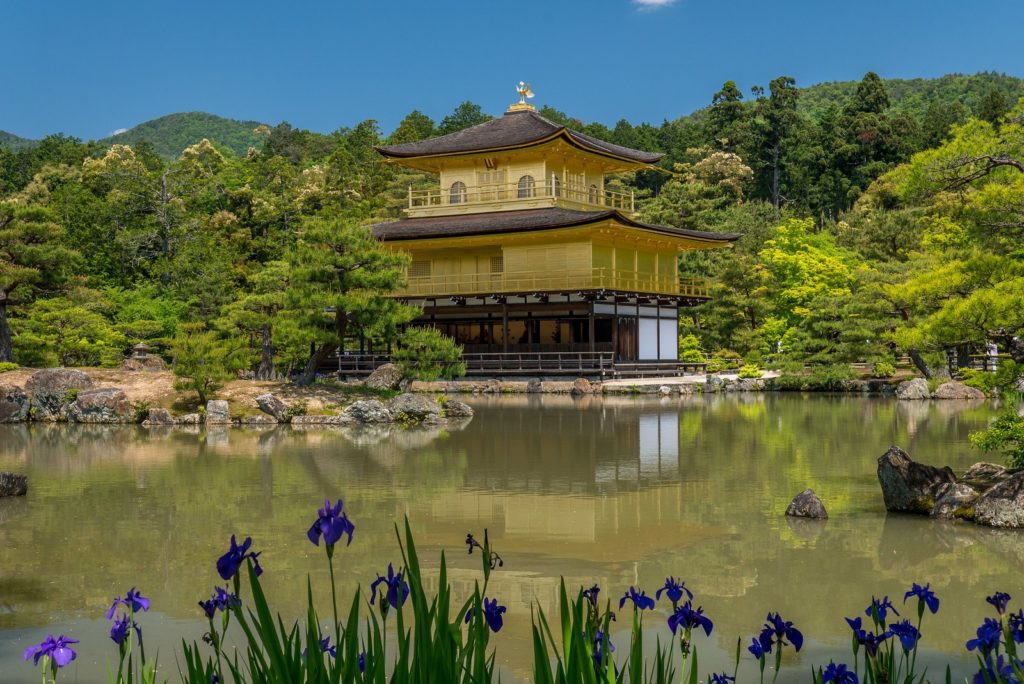
Fushimi Inari Taisha, Kyoto
Having already confessed to reading the book, I’ll cop to seeing the movie Memoirs of a Geisha, too. For anyone who has seen it, the movie beautifully ends with the orange gates of Fushimi Inari Shrine. The torii gates create a long tunnel snaking up the side of a forested mountain. It’s just as stunning in person. Light dappled through the tree and slanted through the tightly packed gates, which are donated by Japanese businesses because Inari is the long-believed patron of business. The shrine dates to 711, which is so many centuries back that my mind boggles.
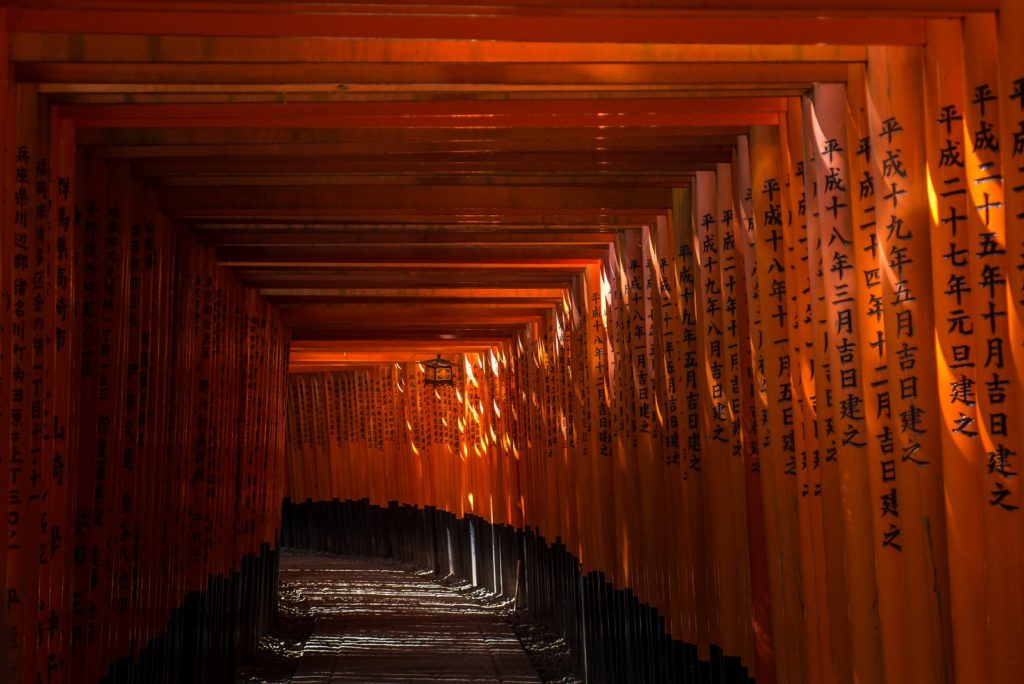
Visiting Japan was an experience almost frozen in time. I had long dreamed of visiting, but the cost and the culture clash had always kept me from booking my ticket. I hiked mountains, visited temples, slurped soup, and studied the people. It was a fascinating and contradictory two weeks and among the most interesting places I’ve ever traveled.
From: A little a drift (Check for more pictures)
Do you have the dream of traveling to Japan? Meet our BLW Travels module, prepare yourself in only 32 lessons for the trip of your dreams! Contact us for more information!

